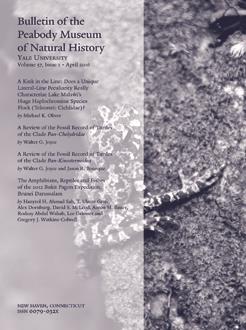A downward kink one or more scales in length at the posterior end of the upper lateral line, leaving only one scale row instead of two between it and the lower lateral line, has been considered a synapomorphy uniting as a monophyletic group all members of both clades of endemic haplochromine cichlids of Lake Malaŵi. Here, this claim is tested by surveying the character in representatives of all genera of Lake Malaŵi haplochromines (tribe Haplochromini of the subfamily Pseudocrenilabrinae). Presence of the kink is shown to be variable in most genera, and it was not documented at all in two (Abactochromis, Cyrtocara). Specimens with no kink occur in many genera, and kink presence and length frequently vary on the two sides of the body. Thus, it is difficult to justify the kink as a synapomorphy of the species flock. The two clades differ in kink frequency; a kink occurred on at least one side of the body in 79% of bilaterally assessable specimens in the non-mbuna clade, but in only 53% of those in the mbuna clade (p < 0.0001). When a kink is present, its length is more variable in non-mbuna (1 to 8 scales, mode 2) than mbuna (1 to 4 scales, mode 1). Extension of the upper lateral line backward from the upper flank close to or onto the caudal peduncle, where no scale row is as dorsally situated, is identified as one cause of kink existence; additional factors likely await discovery. Contrary to published statements, the kink is expressed in some specimens of Astatotilapia calliptera, a phylogenetically important nonendemic haplochromine found in Lake Malaŵi and elsewhere, which may be the sister of the lake's endemic flock. An apparently identical lateral-line kink occurs sporadically in haplochromines in other lakes and in members of three other pseudocrenilabrine cichlid tribes, further refuting the hypothesis that this character is a synapomorphy of the Lake Malaŵi species flock.
How to translate text using browser tools
1 April 2016
A Kink in the Line: Does a Unique Lateral-Line Peculiarity Really Characterize Lake Malaŵi's Huge Haplochromine Species Flock (Teleostei: Cichlidae)?
Michael K. Oliver
ACCESS THE FULL ARTICLE
character survey
Haplochromini
hypothesis test
Pseudocrenilabrinae
Squamation
variation






